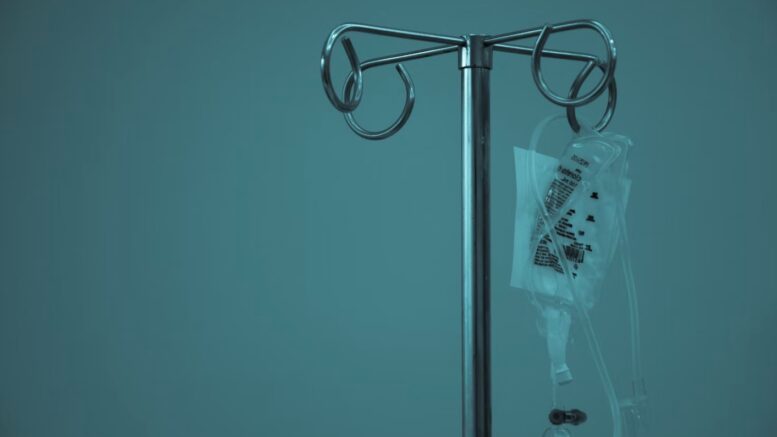Whether you’ve been in the hospital or have visited a loved one in a medical facility, you might have noticed poles with IV lines gracing nearly every cubicle. IV fluids, also known as intravenous fluids, are suitable for people of all ages and are a safe procedure with minimal complication risk.
However, we all deserve to be well-informed about our healthcare needs. IV fluids are no exception. The more you know, the easier it can sometimes be to make informed decisions. You’re bound to feel more confident after learning the following information about IV fluids.
IV Fluids Are Used for Many Reasons
Lawyers from law firms like Sadaka Law meet with clients from all walks of life who have received IV fluids for a range of ailments. They are typically injected into your veins through an IV tube to prevent and treat dehydration. However, they are also recommended and often administered to people who are sick, injured, or undergoing various healthcare treatments. The simplicity and safety of IV fluids make them a popular option with healthcare professionals.
There Is More Than One Type of IV Fluid
IV fluid just looks like water in a bag. Since you’re often given IV fluids when you’re dehydrated, it’s easy to assume that water is all it is. However, there is more than one type of IV fluid. Your healthcare provider will choose the most suitable one for your needs.
The most common type of IV fluid is called a crystalloid solution. There are multiple varieties within this category. You might be provided with normal saline – salt in water or D5W – sugar in water. Lactated Ringer’s might also be an option you learn about. This form of IV fluids has calcium, lactate, sodium, potassium, and chloride. This type of IV fluid is typically reserved for people who require aggressive fluid replacement for rehydration.
Outside of crystalloid solutions, there are colloids. This IV fluid type consists of large molecules that mostly stay in your blood vessels rather than passing through your cell membranes. They are commonly referred to as hetastarch and albumin.
Receiving IV Fluids Is Straightforward
When you see a bag of fluids with plastic tubes being brought toward you in the hospital, it’s easy to feel nervous. When we’re unfamiliar with the treatments we’re being provided, our hospital experiences can be scary and overwhelming. However, the process of receiving IV fluids is straightforward. Typically, healthcare providers like nurses take the following steps:
- Choose the best IV fluids for your needs
- Calculate how much fluid you need and in what timeframe based on your medical conditions, weight, and age
- Clean the skin where the IV line will go
- Tie a tourniquet around your arm to bring blood into the vein
- Find the vein to identify the insertion site
- Insert the sterile needle with a plastic tube on the end into the vein
- Remove the tourniquet
- Attach a small plastic piece to the tube
- Test the tube
- Tape the needle to your arm to keep it in place
- Attach the tube to a longer tube and the bag of fluids
- Hang the IV fluids on an IV stand
- Turn on a machine that pumps the fluid into the IV line
There Are Risks Linked to IV Fluids
No medical procedures are without risks, and IV fluids are no exception to the rule. Personal injury lawyers work with many victims who have suffered complications after receiving IV fluids. While rare, some of the following risks can be attributed to IV fluids:

Air Embolisms
Air embolisms are perhaps one of the scariest complications associated with IV fluids. They have an estimated incidence of 1 in 47 to 1 in 3,000. Air embolisms occur when an IV line pushes too much air into your veins. Death can be one of the consequences of this complication.
Infiltration
Infiltration describes IV fluid entering the tissues surrounding the vein. Sometimes, this happens when the needle becomes dislodged or moves. Many people experience stinging and bruising. However, in rare situations, it can cause nerve damage. Nerve damage is one of the most severe injuries resulting from IV infiltration. Some people experience numbness, pain, weakness, and tingling in the area surrounding the needle site.
Collapsed Veins
Collapsed veins can be frustrating for patients and healthcare providers alike. This means that the vein collapses when a needle is inserted into it or when an IV has been inserted for an extended period. When collapsed veins occur, healthcare providers simply choose another vein through which to provide IV fluids.
Infection
While cleaning the needle site is one of the first actions healthcare professionals take before inserting your IV line, infection can still occur. Infection is often a sign that an area isn’t entirely clean or hasn’t been kept clean. Fortunately, infections can often be treated with antibiotics.
Phlebitis
Out of all possible IV fluid complications, phlebitis would have to be one of the most common. Phlebitis describes veins that become swollen with an IV line. Healthcare providers typically alleviate phlebitis by removing the IV line, elevating the arm, and applying a warm compress.
Fluid Overload
Healthcare providers determine how much IV fluid to give you and over what period based on many factors unique to your body. However, they might not always get it right. Sometimes, patients are at risk of fluid overload. This means you’ve been given too much fluid too quickly. It’s not uncommon to experience high blood pressure, a headache, and trouble breathing. If not rectified, fluid overload can be serious.
You’ll Most Likely Receive IV Fluids
Up to 90% of hospital inpatients receive IV therapy. It’s a standard treatment option and one that can be of great value to many people. Therefore, IV fluids might form part of your treatment if you’re in hospital for any reason. This can be especially true if you’re dehydrated, unwell, in need of emergency care, or require surgery.
You deserve to have all the facts about the healthcare you receive in a hospital setting. The more you know about IV fluids, the less scared and daunted you might be when the time comes to receive this procedure yourself.
